
Ingredients (makes 4 skewers)
1 cup (about 300 g) freshly cooked hot rice
10 g roasted walnuts
10 g parched white sesame seeds
(A)
2 tbsp sugar
1 tsp soy sauce
2 tbsp miso (“akamiso” if available)
2 tbsp water
4 disposable chopsticks (or other wooden sticks)
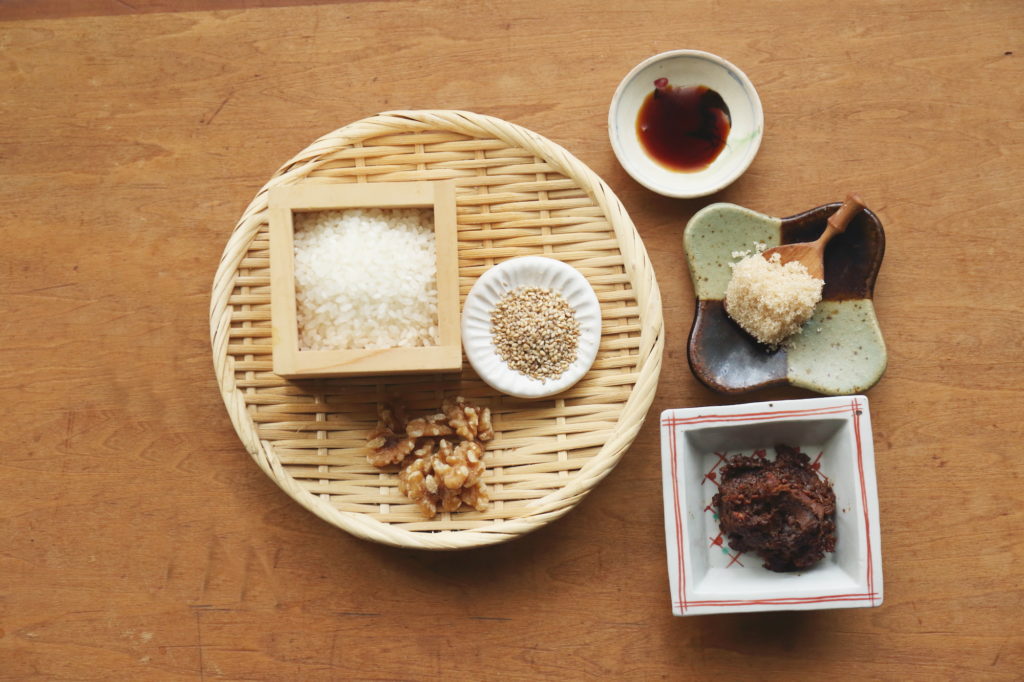
How to Make
1. Grind the walnuts and white sesame seeds in a suribachi (mortar). Alternatively, put the ingredients in a plastic bag and crush with a rolling pin. Soak the chopsticks in water.
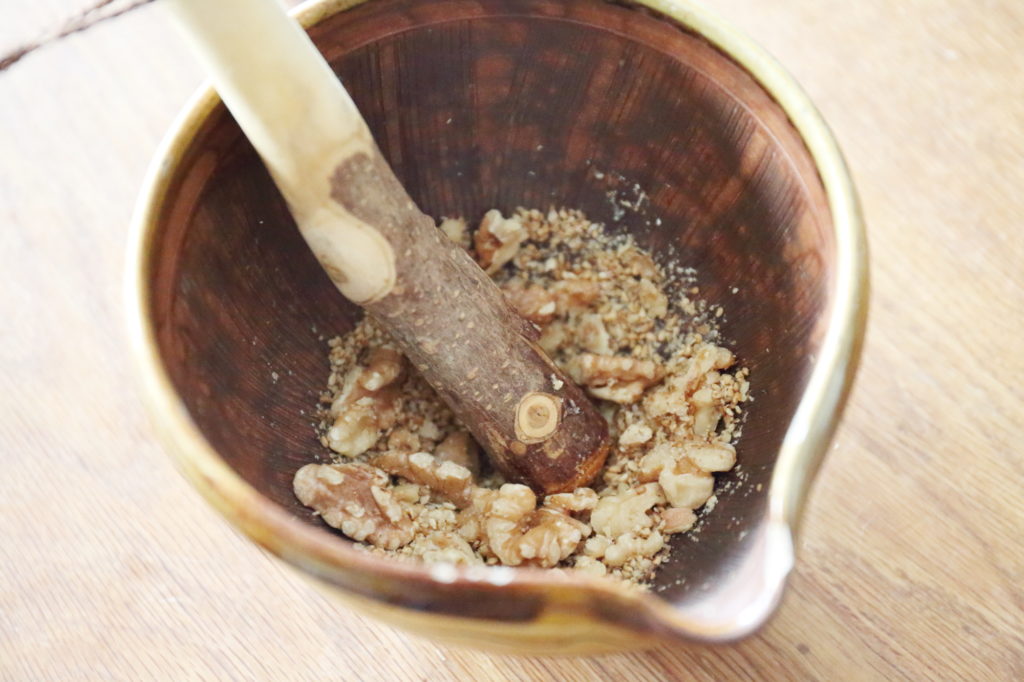
2. Combine (A) in a skillet, turn the heat on, and stir with a wooden spatula. Bring to a boil and immediately turn the heat off. Stir in the ground walnuts and sesame seeds.
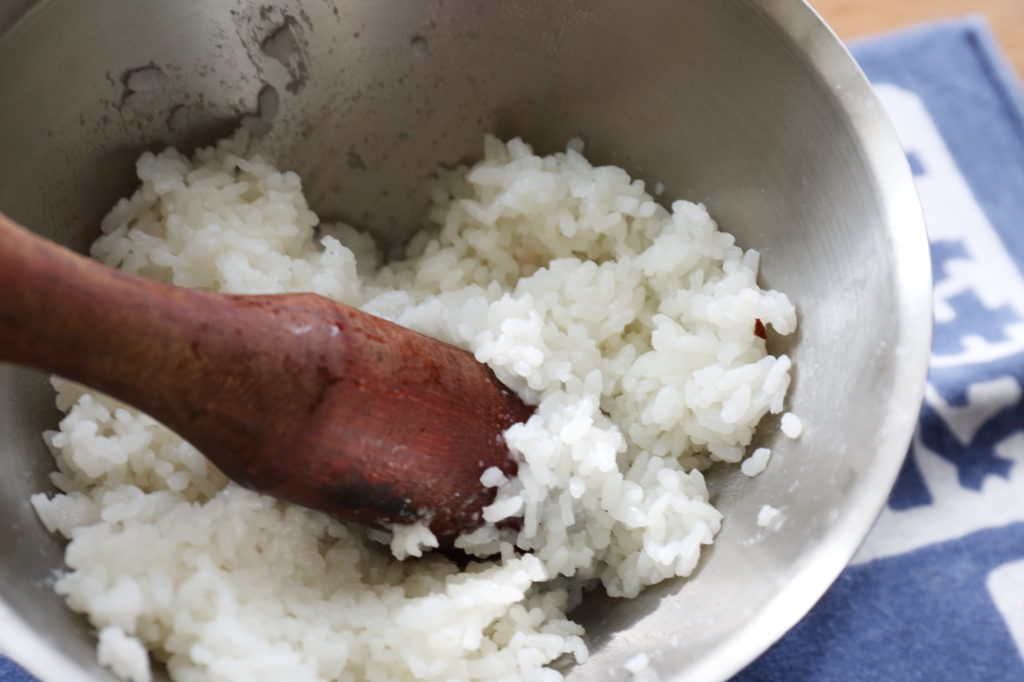
3. Place the freshly cooked rice in a bowl and mash with a damp rolling pin until slightly grainy. With wet hands, divide into 4 portions, wrap each firmly around chopsticks, and shape into a flat oval cake (the shape of waraji straw sandal). Cool to let the surface dry.
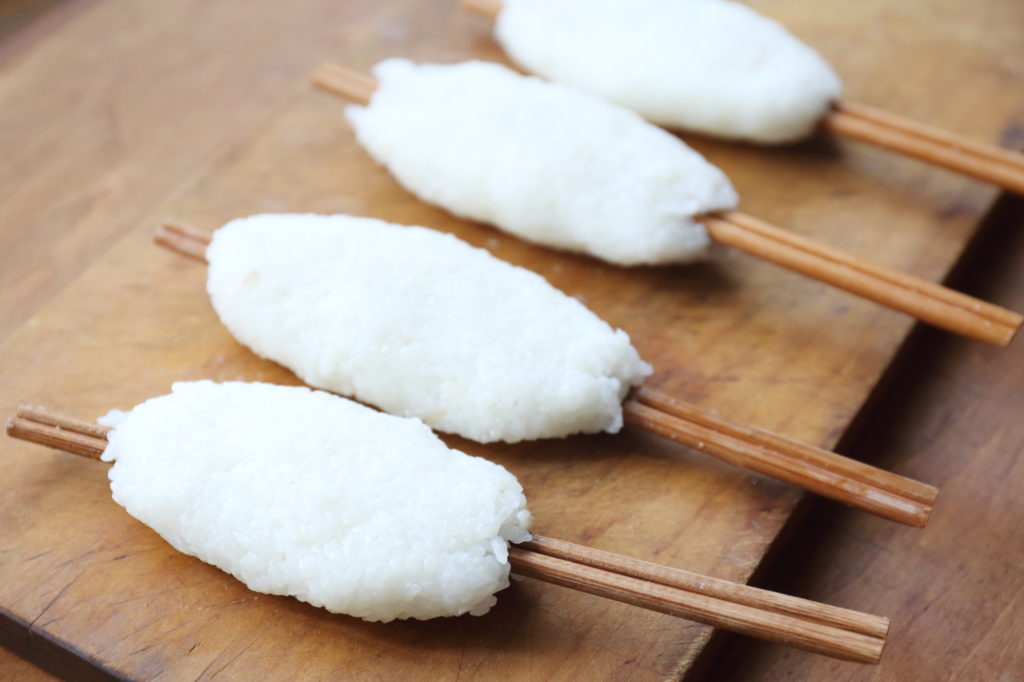
4. Using the back of a spoon, coat one side of the goheimochi with the miso sauce. Cook on a grill (built into your kitchen stove or other) for 2–3 minutes until brown. Coat the other side with miso sauce and cook.
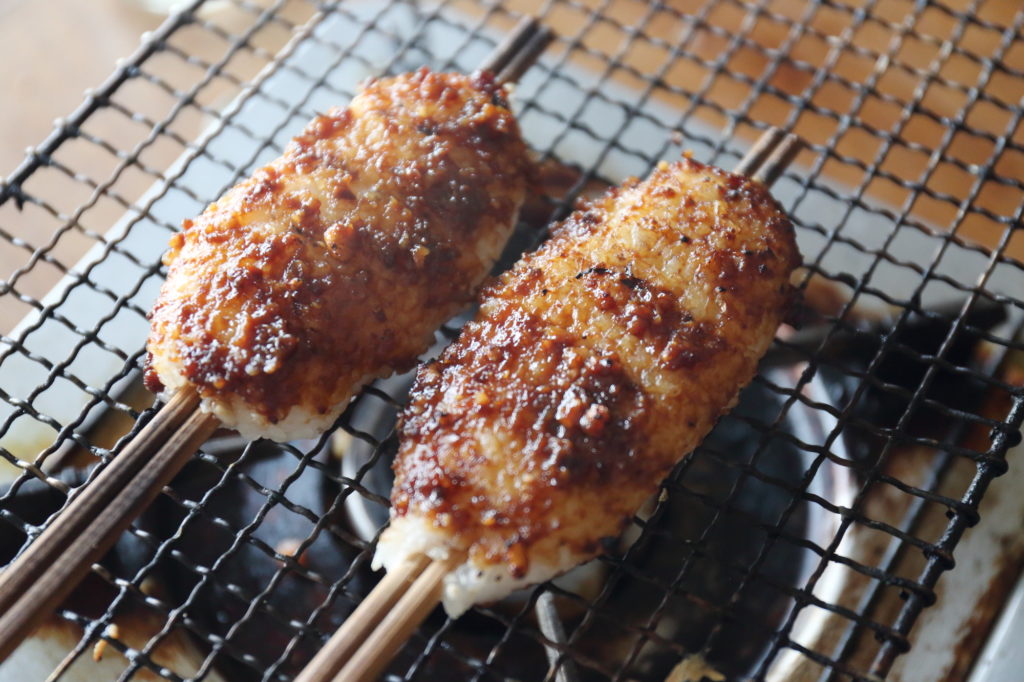
Goheimochi is a rice cake that’s enjoyed anytime during the day as a snack, a quick bite, or as a tasty treat. In Gifu, locals buy it at specialty goheimochi shops and at corner dango dumpling shops. Some residents make it at home. The highlight is the burnt aroma of sweet miso sauce. Originally, this was produced by cooking over a charcoal fire. Whereas akamiso (red miso) generally refers to any reddish colored miso, in the Tokai region it refers exclusively to mamemiso (soybean miso) made from a 100% soybean base without rice.
Homemade goheimochi is fun to prepare and looks most authentic when you thread it onto chopsticks or wooden skewers. Then again, it’s easier and quicker to form balls of rice only and cook it in a skillet. But to produce that delicious burnt aroma, I recommend cooking it over a grill on the kitchen stove. And if you’re ever in Gifu, try the local goheimochi, too.
minokamo | Cookery expert / Photographer
Gifu Prefecture native minokamo’s culinary adventures were inspired by her fond childhood memories of cooking with her grandmother. She researches, writes about, and arranges regional dishes that capture, through their preparation and presentation, sensory enjoyments inspired by local climate, history, and lifestyles. Ryori tabi kara tadaima (Back from a Cooking Journey; Fudosha), published in September 2020, is a collection of recipes from minokamo’s visits to homes up and down Japan.











